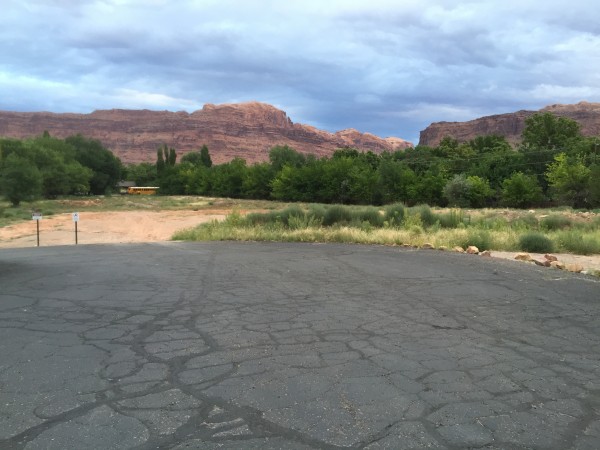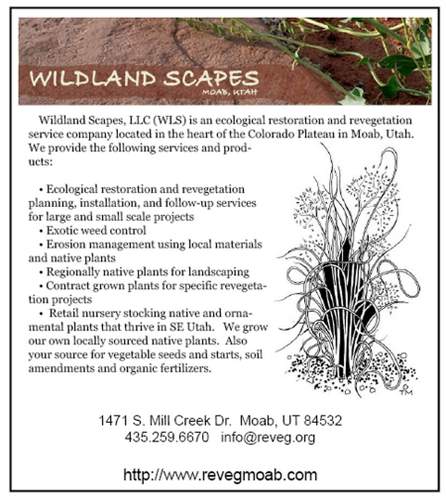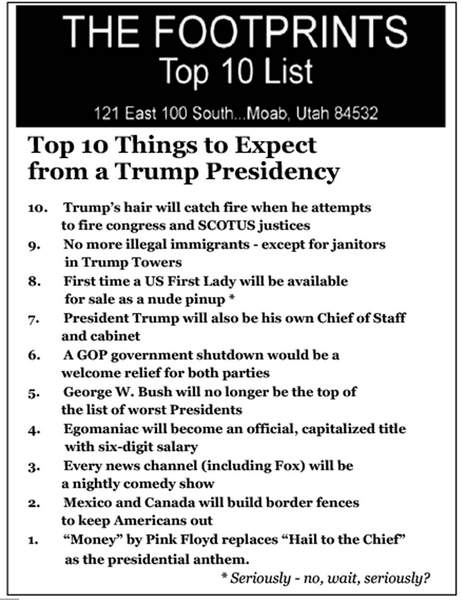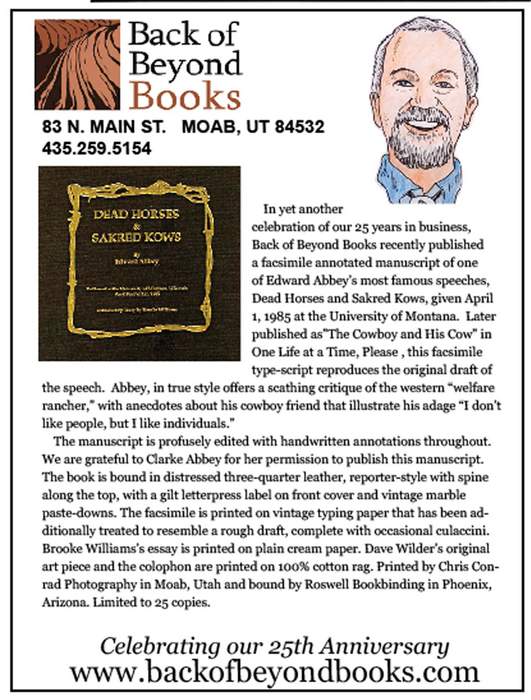I returned from a few weeks away to a white wall on Main Street across the street from my driveway. A Homewood Suites has broken ground at Center near 100 N and since the hotel will be built to the property line, as is allowed in the C-3 zone, provisions must be made for pedestrians that also will protect them from overhead hazards. I haven’t seen one of these structures outside of big cities like New York. Seeing one in Moab is really weird. Parking downtown this fall, and likely next spring, will definitely be impacted by this pedestrian walkway. Considering the City of Moab told me I’d have to pay $10,000 to have driveway access in front of my house a block away, which has been there since 1890 and used as a residence much of the time since my husband’s family bought it, I wonder if Homewood Suites is paying for the privilege of occupying 8 to 10 parking spaces for at least 6 months.
The new hotel will dwarf the old Poplar Place and add one more 3 story box to Main Street with a basement parking garage. Having watched how much water has ended up in my backyard (from 100 North) during some storms I’ll be curious to see how underground parking works at Main and 100 North.
In April of 2015 I recalled learning that the City Planning Commission was hearing a proposal to change the zone of a large parcel of land next to the Super 8 hotel on Main Street from R-2 to C-4. I heard a lot of frustration and anger from neighbors to this property. It is 4.4 acres and while it also is adjacent to Main Street (for a short stretch) and the Super 8, the other side abut residential yards and 500 West, a residential thoroughfare. The proposal finally made it to City Council for final approval/denial in mid-August, and was approved in a 4-1 vote on August 18th (The Times Independent, August 20, 2015).
I’m back to affordable housing and the problem that is bigger than Moab. This issue crosses political boundaries – we all live here because we love it here. Let’s make it what WE want it to be, not what some out of town corporation decides we need, and then takes the profits out of the valley.
CAN ANYTHING WE DO ACTUALLY HELP AT THIS POINT?
Recently someone mentioned to me that participation in local government, on planning commissions or even councils, is pointless anymore as things are so far gone (especially in Moab). They pointed out that there is no real hope to influence things, and certainly not to change things for the better for Moab residents. I have been pondering this a lot lately, especially in light of a recent zone change in Moab from residential to commercial that was vehemently opposed by neighboring residents.
The cynic in me agrees is resigned to the fact that Moab as a community is not addressing its housing need. Access to reasonably priced housing is one of the single most pressing issues to be resolved for this small town to retain any but the most wealthy, or lucky, amongst us to live here. The source of this problem is certainly not just within Moab, but the solution most certainly is. It is up to our community to make decisions for residents, not just for visitors and out of area corporations.
I had intended to write this month about the corporatization of Moab businesses and how so many of the large tourist owned developments have turned this town into a Disneyland type experience. Also how they are not benefiting the local residents much since the profits generally leave town. Most jobs created by these chain hotels and large out of town investors are low paying and dead end. But then this zone change request was approved and I realized it is still all about housing – and there IS something we can do about it if we take a little time and stay informed about what is going on around us.
NIMBY or A REAL COMMUNITY PROBLEM?
The civic minded Moab resident in me is angry.
I am angry at myself for not attending or speaking up at these hearings. I read about them in the paper, and I ticked my tongue in displeasure. But when I learned that the decision was being reviewed again at City Council I did not take the time to find out more or attend any further meetings, or at least write a letter to the Council emphasizing that residentially zoned land is a community asset that should be given up only for larger community gain not just individual profit. I’m busy, we all are busy. And a part of me really didn’t think that the Council would grant this zone change request with the current lack of housing in Moab.
I should have known better.
It is common for neighbors to be upset over zone changes in their area – especially zone changes like this one where suddenly an empty tree lined lot may become a tall 3 story building full of nightly rentals and a loud parking lot full of toy hauling diesel trucks that become repair stations in the late evenings. It is easy to dismiss neighbor complaints as “not in my back yard” behavior. However, in this case, with the housing crisis facing Moab, this zone change is much more than that.
This zone change is the loss of 4.4 acres of land that could have become a neighborhood. 4.4 acres is a pretty large parcel in Moab city limits these days. The R-2 zone allows construction of one and two family dwellings (minimum 500 square foot buildings) on lots of at least 5000 square feet. This space could have housed at least 30 working families. While the parcel is too small to fit Planned Unit Development regulations for density bonuses (which requires a minimum 5 acre parcel in the R-2 zone) it still could have been designed in a townhome style development with duplexes that could have fit a good number of reasonably priced homes. And it is close to town and services.
Now 1.3 acres is still zoned residential, but 3.1 acres is now C-4.
The C-4 zone allows auto body shops, beer parlors, schools and public buildings, restaurants, and, of course, nightly rentals.
I don’t know if the neighboring property owners would have been equally upset about a rezone to C-1 zone, but in my opinion a change to C-1 would have been a decision that acknowledged the change in town including the need for housing. A C-1 designation would have not allowed nightly rentals (or hotel expansions) but would have allowed denser residential construction, including apartments, as well as other commercial uses. I admit I did not pay enough attention to the discussions and what the currently land owner was asking, but now 3.1 acres can be almost any kind of commercial development to serve visitors and expressly cannot be an apartment building UNLESS it houses workers of adjacent businesses.
The 1.3 acres left in residential designation means a maximum of about 6 working family homes. That means that the City Council gave away the potential for around 20 residences. Residences that would most likely have been reasonably priced homes for rent or purchase that could have given young local families a place to start. Now we just get more nightly rentals and visitor amenities.
ZONE CHANGES ARE NOT A RIGHT
I am angry at our Planning Commission for passing this request on to City Council with a favorable recommendation. Just because a land owner requests a zone change does not mean the Planning Commission has to send it on to Council with a favorable recommendation.
Reasonably priced housing is constantly on the pages of the newspapers, and all over social media. And the City has an affordable housing action plan. It is the Planning Commission’s job to pay attention to the long term planning needs of the community and to know what vacant land is left in the City and understand the needs of the entire community. The Planning Commission KNOWS we need more housing. The Planning Commission KNOWS that an up zone from residential to commercial is an instant increase in property values. The Planning Commission KNOWS that nightly rentals have negative impacts on adjacent neighborhoods and city infrastructure.
I am angry at our City Council – who voted nearly unanimously – for this, and the recent other zone change from residential to commercial! Only one member, Kyle Bailey, was able to see the loss of residential housing opportunities as important enough to stand up and just say no. Simply because the Planning Commission passed it on with a favorable recommendation does not mean the Council had to approve it.
I sat on the Moab Planning Commission for a number of years. I had to vote “yes” on any number of projects that I did think were good additions to Moab or served our residents much. The role of a planning commission is, after all, administrative and quasi-judicial. So my opinion didn’t matter at all in reviewing these plans. The Planning Commission’s role is to review plans and compare them to code requirements (with the help of City Staff) and determine whether a project meets code. When I was appointed I took an oath to that effect. I learned later that it was at times very hard to vote against my deeply held beliefs. But I still did my job as a Commission member.
In some cases there are conditions a Planning Commission can set, if the code so dictates, before a use can be allowed. Final approval of ALL planning commission recommendations with conditions comes from the City Council. The only way the Planning Commission can suggest change is by drafting code changes and reviewing zone changes. Final decisions about code and zone changes are legislative and can still only be made by the City Council.
I remember while chairing planning commission meetings related to a zone change request for a parcel the end of 100 N bounded on the south by Williams Lane. This zone change, if I recall correctly, included multiple parcels of property; some that was zoned residential and some that was zoned commercial. A large portion of the property housed old run down trailers. After the zone change request went through planning commission and was passed on for final review and decision I attended the public hearings at City Council. I attended and spoke as a resident, not as Planning Commission chair, and I made that clear in my comments.
My argument against changing the zone of the property at that time, and my objection to the recent zone change on 500 West, is that the just because a land owner requests a zone change, the City is not required to grant that request. A zone change, whoever initiates it, is a very big deal that should meet larger community needs, not just individual land owner desires and profits. A zone change alters the rules that were put into place years and years ago when the zones were designated.
ZONING 101 (a very very abbreviated history of zoning)
Municipalities began to segregate land uses around the turn of the century in response to general decline in urban conditions as these cities and as factories and manufacturing grew creating health hazards for people living nearby. According to some histories of zoning, around 1300 municipalities had adopted zoning regulations by 1936. The first Supreme Court case to uphold zoning laws as constitutional was focused on a suburb of Cleveland called Euclid in 1926. The basic idea behind Euclidian land use zoning was to separate uses perceived to be incompatible to protect the health, safety and welfare of residents. The most obvious way that zoning does this is by keeping industrial and manufacturing activities separated from uses like housing or schools. I am not sure when Moab and Grand County first adopted zoning regulations, but it was quite some time ago. So long ago that most of us take zoning, and the protections it gives us, for granted.
All private property is subject to these regulations, which allow some uses and disallow others. In Moab, residential land generally cannot be used for commercial or industrial purposes, except for home occupations and in some zones in Moab, bed and breakfast establishments. Agricultural uses are also restricted to specific areas. Zones create predictability for land owners and for neighbors.
The system of zoning is imperfect, to be sure, but it is the system that was devised and agreed upon nearly 100 years ago.
There are mechanisms to change or amend zones. At times municipalities need to do that when actual land use patterns no longer fit zoning descriptions, or new uses are proposed by land owners that are not described in existing zone language. This has given rise to performance based zoning and other ways to allow uses to coexist, within certain constraints. Land owners can apply for zone changes if they feel their property is zoned incorrectly, or if the growth around it has changed character of the area significantly and the use that now makes sense is not allowed without a zone change. Cities and counties can initiate zoning changes, or additions to code, if they feel there is something that was missed in the past language that needs to be addressed today.
But any zone change, initiated by a municipality or by a land owner, is a serious matter that needs to go through a rigorous process. It is a legislative change, and therefore needs the approval of the governing council. Zoning regulations and assigned zones are hard to change on purpose, so that land owners, neighbors and the community at large can have some idea of what to expect in a neighborhood or community downtown area. And a zone change request can be denied.
A land owner must be allowed to use the land that he or she owns, per the zoning, but any zone change is subjective and should advance a public interest, not just a land owner interest or profit. Zone changes that up-zone (as a residential to commercial zone change does) instantly add monetary value to the property. A zone change should ALWAYS be done with the city plan in mind, not just what the land owner wants. While a land owner is free to request a zone change, that request is like a teenaged kid asking mom and dad for an exception to a curfew or other house rule. The City is free to deny that request – no matter how many times the owner returns and asks again.
It might sound unfair or somehow un-American that a city can stand in the way of a land owner making as much money as possible from their property. But when you buy a parcel of land you also buy the zone (and an understanding of adjacent land zoning) and the restrictions and permissions that come with that zone. And your neighbors did the same. Zoning documents are public documents and are there to make sure that growth and development over time meets the needs of the community as well as the needs of individual land owners.
Denying a zone change request is not taking away property rights. Property rights are still there, the land owner can still do things on and with that land according to its zone designation.
BACK TO MOAB
About 10 years ago I bought the land on which my retail nursery sits. It was the only parcel in town I could afford, and it was a mess. Only ¾ of the building had a foundation, and the part that did have a foundation was actually a small basement that had concrete walls in some places nearly 3’ thick. It used to be a bar, and a battery recycling location, and a movie rental business. Because the lot is located on the old highway, the front half was zoned commercial and the back half residential, something called split zoned. This is fairly common in parts of Moab and other small towns that grew before zoning regulations were drafted and where zones were later assigned, often based on arbitrary distances from streets. In order to grow plants as a business I had to approach the county planning commission and subsequently county council for a zone change. I could not pick just any zone, it had to be something that worked with what was around the area now, and also with the potential future plans for that corridor. The onus was on me to explain how the zone change benefited more than just me, the property owner, and how the zone change was in keeping with the surrounding area.
While Moab City has not recently updated its General Plan, it has an Affordable Housing Plan and it is well known that a critical need here is housing. We also need a new, larger sewer plant. And I don’t know about our water delivery system, but I suspect it needs upgrades as well. All of these things should have been taken into account when up zoning to allow construction of what may well increase pressures on already over extended infrastructure, and loss of residential development potential.
Leaving this property residential would have preserved some substantial space for development for residents rather than for visitors. But this and other residentially designated areas were given away. By converting some of our last large parcels in the City limits to commercial designation the city guarantees they will become nightly rental businesses or other visitor amenities and not homes.
ELECTIONS ARE COMING
So I am back to where I started, talking about housing – and the only thing I can think to do is to participate in some way, despite the sense of futility. For me, right now, that is writing opinions in a public forum. In future, I will stay more informed about what is going on at the City and County and attending Planning Commission meetings and Council meetings to speak up when I see development pressures pushing community needs to the side.
When I was on the Planning Commission it was always a bit depressing to see an empty room at our meetings, even most public hearings. It made our work feel irrelevant and pointless at times, though it is far from that. It is easy when no one comes to the meetings to be a little lazy about reading up on the issues before voting, and to vote with less of a civic consciousness. Watching Planning Commission and City Council meetings may at times be dull, but at times it is riveting. And more importantly, attending them helps the members of these governing bodies remain aware there is a public out there who cares about the town, and about the decisions that are made. Believe me, it is much more fun to stay at home on a Tuesday or Thursday night and read, watch a video, spend time with family or friends or go for a walk. But it is important to also take a little time to attend these meetings to stay informed about issues beyond just those in your own neighborhood. And sometimes you run into someone at meetings you haven’t seen in ages, and get a chance to catch up afterwards!
I am very glad to see a large field of candidates for City Council this coming election. I know a couple of these people well enough to have some opinions. I know of the rest of the candidates, but not well enough to feel informed yet. Some are long time locals with deep family ties to this region, and others are transplants who have been here long enough to know what they are getting into. I ask all of those running to please think about Moab housing as a critical issue; find out how much vacant land is left in the City and think what can reasonably be done to improve housing possibilities in this town. Planning and zoning may seem like a side issue that is the job of the Planning Commission, but really, at the local level it is all about planning and zoning. And right now for Moab it should be ALL about housing. If this community cannot house the people it needs to work in whatever industry is here (or moves in), be it tourist, mineral extraction or something in between, this boom will bust faster and uglier than I think any of us can even imagine.
As for the rest of us, who are busy living our lives and trying to make it in Moab, take the time to get to know the candidates. They all live in town; some might be a neighbor. Ask them about their suggestions to improve Moab’s housing crisis situation. I know that I for one don’t want to see one more residential lot changed to commercial designation until we have filled our housing gap. I would rather see a 3 story apartment (with residences on all floors) across the street from my house than yet another 3 story hotel.
Kara Dohrenwend is a regular contributor to the Zephyr. She lives in Moab, Utah.














Kara,
Very well written article. I was touring some property close to your nursery. I am disturbed by many factors in this matter, much of it brought up in the article.
Thanks for being there. I will see you soon.
Kara, I just heard the Housing plan summarized by Zachariah Levine; interesting statistics. Your comments in this article are well thought out. Thank you.